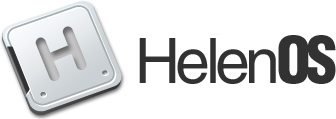Changes between Version 1 and Version 2 of Tutorial
- Timestamp:
- 2014-12-18T16:45:22Z (10 years ago)
Legend:
- Unmodified
- Added
- Removed
- Modified
-
Tutorial
v1 v2 1 1 = What is HelenOS = 2 2 3 HelenOS is a portable general-purpose operating system designed and implemented from scratch. It is based on microkernel multiserver design principles. This means that the kernel of the system has relatively limited responsibilities (mostly just memory and resource management, scheduling of threads and facilitating communication between user space tasks) and most of the core system functionality is implemented in user space (including for example device and file system drivers). The core system functionality is decomposed into individual, isolated, intensively communicating and mostly si ngle-purpose user space tasks. This orthogonal decomposition of concerns follows the concepts of component-based software engineering.3 HelenOS is a portable general-purpose operating system designed and implemented from scratch. It is based on microkernel multiserver design principles. This means that the kernel of the system has relatively limited responsibilities (mostly just memory and resource management, scheduling of threads and facilitating communication between user space tasks) and most of the core system functionality is implemented in user space (including for example device and file system drivers). The core system functionality is decomposed into individual, isolated, intensively communicating and mostly simple user space tasks. This orthogonal decomposition of concerns follows the concepts of component-based software engineering. 4 4 5 5 The HelenOS project has been in constant development since 2005 (with earlier prototypes even predating its official inception), but the development team is rather small and its manpower is limited. Therefore HelenOS is still not a drop-in replacement for mature operating systems such as GNU/Linux. It simply lacks some end-user features of a desktop operating systems. But it is an excellent research, experimenting and prototyping tool, also thanks to a well-documented and readable code. Over the years, many contributions to HelenOS were done by university students in the context of their bachelor/master theses or programs such as Google Summer of Code and ESA Summer of Code in Space. This also demonstrates the friendly learning curve of HelenOS. … … 47 47 48 48 Once you get bored by this, just run `tetris` from the terminal window. This should make you occupied for some time. 49 50 == Cool Stuff == 51 52 A brief list of quick and interesting things to do in HelenOS. We assume you have used the suggested QEMU command line, otherwise your mileage may vary. Just run these commands in the terminal window: 53 54 * `ping 127.0.0.1` 55 - Ping the localhost. 56 * `ping 10.0.2.2` 57 - Ping the QEMU virtual gateway. 58 * `dnsres google.com` 59 - Try to resolve the IP address of google.com. You can use the arguments `-4` and `-6` to specifically ask for an IPv4 or IPv6 address. 60 * `websrv -p 8080` 61 - Start a web server on port 8080. You can then type the URL `http://localhost:8080` in your browser in your host system and see what happens. 62 * `wavplay demo.wav` 63 - Play a sample sound file. 64 * `modplay demo.xm` 65 - Play an XM module file. The pitch of some of the notes is not correct because the player does not implement all the FastTracker II effects yet. 66 * `edit demo.txt` 67 - Run a simple text editor to edit some UTF-8 text file. The entire system uses UTF-8 to store character strings and texts, although the terminal font does not support all Unicode glyphs.
